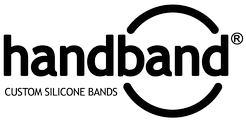Anti-obesity campaign in Britain goes big with Wristbands
The anti-poverty movement has its white wristbands. The AIDS awareness campaign has its red ribbons. Is the effort to curb obesity about to get its own instantly recognizable symbol?
The British government last month outlined a new strategy, including a £75 million, or $145 million, three-year advertising campaign, to try to get Britons to slim down. Almost two-thirds of adults and about a third of children in Britain are overweight or obese, health officials say.
Some people in the advertising industry are calling for the campaign to resemble the recent anti-poverty initiative that went under the name "ONE" in the United States and "Make Poverty History" in other countries. Millions of people bought white wristbands to signal their commitment to the movement. To be effective, advertising executives say, the anti-obesity initiative needs to be similarly broad-based.
"We're saying, if you just run some advertising and then forget about it, it's going to have zero effect," said Hamish Pringle, director general of the Institute of Practitioners in Advertising, which represents British advertising agencies. "If we're seeing obesity as a societal problem, it could be a decade before it shows results."
Several years ago, amid rising concern about obesity and alarm in the ad industry about a possible backlash over the marketing of unhealthy food, agencies based in London presented ideas to the government for an anti-obesity logo, along the lines of the triangular symbol that is used internationally on recyclable materials.
Rather than referring directly to food or exercise, the proposed symbols apparently were intended to convey a message of personal responsibility for diets. They could have been applied to food packaging, Web sites or even soccer shirts to make the message resonate with children.
The idea stalled, advertising executives say, because of disagreements over how the program should be run.
The government, for instance, wanted to be able to exclude junk food brands from using the logo, advertising executives say. The industry wanted to leave that decision to marketers. The logo would have appeared alongside a separate set of nutritional labels that are being phased in on British food packaging.
Though the government published a 56-page report on the overall anti-obesity strategy, including plans to promote bicycle riding and to require cooking lessons in schools, it provided few details on what kind of advertising it envisioned.
The plan calls for an "evidence-based marketing program which will inform, support and empower parents in making changes to their children's diet and levels of physical activity."
Like most public-sector advertising in Britain, the anti-obesity campaign will be run through the Central Office of Information, a government department that coordinates ad agency assignments. While the direction of the campaign remains unclear, representatives of the advertising industry said they considered themselves fortunate to be thought of as part of the solution to obesity.
"It's using the positive power of advertising, which seems to be a bit of a sea change in how the government sees advertising," said Jonathan Collett, a spokesman for the Advertising Association in London, a trade group for the advertising and marketing industries.
Among the steps the government had been considering was a proposal by some health organizations to ban all television advertising of foods high in fat, sugar or salt before 9 p.m.
British regulators had last year already banned ads for unhealthy foods from appearing during television programs aimed at children. The move was seen as one of the strictest measures anywhere on such advertising. It caused fears in the food industry that calls for ad bans might spread to other European countries.
Meanwhile some anti-obesity groups in Britain say not enough is being done. "It's illogical to spend taxpayer money on anti-junk-food advertising while allowing significantly higher spending on contradicting that message," Richard Watts, coordinator of the Children's Food Campaign.
